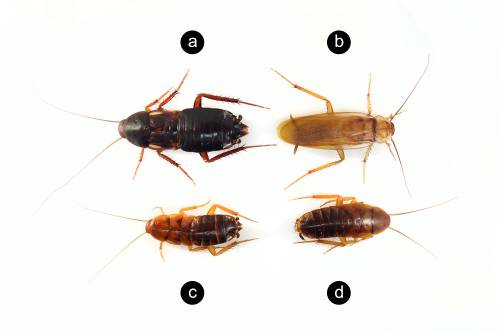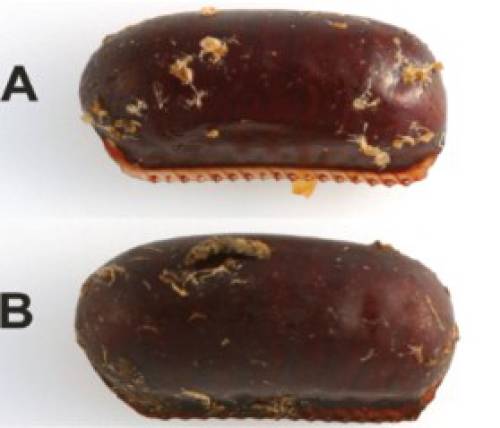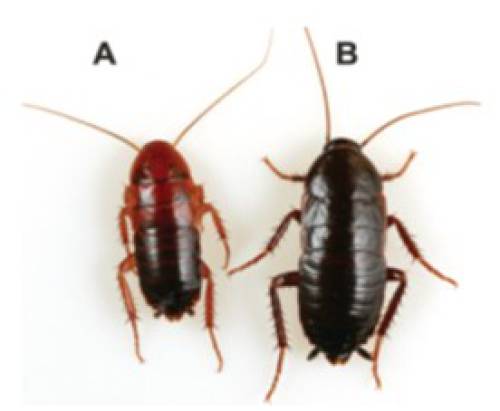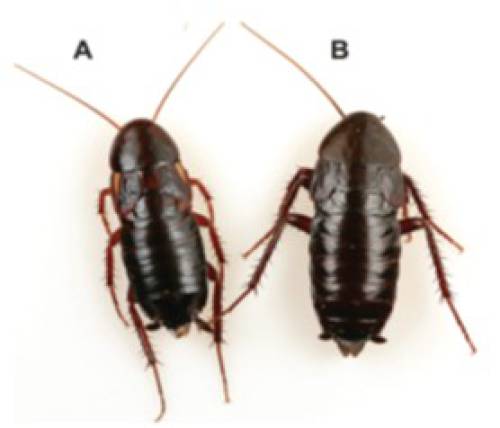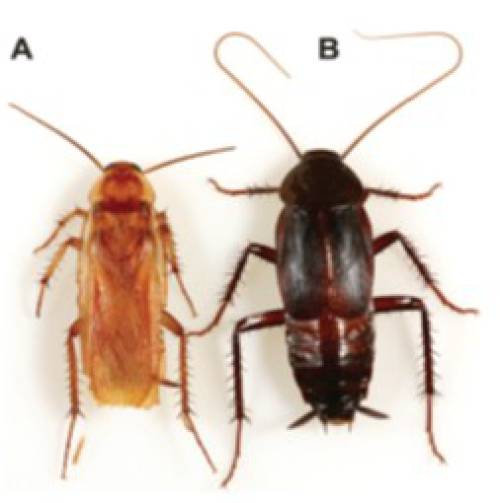Less Known Facts About The Turkestan Cockroach
 Cite
Cite
Turkestan cockroach (Blatta lateralis) (Fig. 1) is an invasive species that was first found in California in 1978 in Lathrope, CA in a military site (USDA, 1978). This species was believed to be transported with military equipment to the US from the Middle East (Kim & Rust, 2013). This species remained relatively unnoticed in California until the early 2000s, when it was found around schools in Reseda, CA (Southern California). By May 2003, high numbers of Turkestan cockroaches were being caught on sticky traps in classrooms, offices, storage rooms, etc. The sticky traps used in school buildings had a mixture of Oriental (Blatta orientalis) and Turkestan cockroaches, with Turkestan cockroach being the dominant species (Gulmahamad, 2004). This cockroach species is readily available online and is commonly sold as live prey for various lizards.
Turkestan is not a country nor a modern state
Turkestan is a historical region rather than a modern geopolitical region. It included Uzbekistan and surrounding territories. Nevertheless, B. lateralis has been reported from the Caucasus Mountains, Azerbaijan, Afghanistan, Central Asia, Iran (Aghdam & Oshaghi 2015), Iraq (Kassal, 1994), Saudi Arabia, Kuwait (Al-Houty, 2011), (Kim & Rust, 2013).
Not a common sewer inhabitant
Although sometimes found in sewer systems, Turkestan cockroaches usually live in the landscape where they commonly inhabit water meter, irrigation, and electrical boxes, raises of concrete, cracks and crevices, and hollow block walls (Kim & Rust, 2013). Their egg cases (oothecae) and nymphs are commonly found in these spaces. Nymphs rarely leave their underground harborage, but adults explore the surrounding areas in search of mates and new breeding sites.
Cannot climb glass and other smooth surfaces
Unlike the American cockroach, Turkestan cockroaches cannot climb smooth surfaces, making them an ideal species to breed in a terrarium without worrying about their escape after each opening. This inability, along with their easy maintenance and fast reproduction, has made them a convenient species to breed for feeding lizard by hobbyists.
Outcompeting Oriental cockroach
In the past, the Oriental cockroach used to be the dominant predomestic (living around households) cockroach in California. However, it is believed that the Turkestan cockroach has effectively displaced the Oriental cockroach in many areas in Southern and Northern California. The mechanism of this competition is not well studied in the field, but a laboratory study (Kim & Rust, 2013) has shown that the Turkestan cockroach has the following advantages over the Oriental cockroach:
- Shorter nymph-adult developmental time
- Higher oothecae (egg case) production
These two factors mean that Turkestan cockroaches can reproduce faster, which may explain why they have become the dominant species. Nevertheless, other mechanisms may be involved in their dominance in the field, which are yet to be discovered.
Is it Oriental or Turkestan?
The following characteristics can help us to differentiate the Turkestan cockroach from the Oriental cockroach (Kim & Rust, 2013):
- Oothecae (Fig. 2):
- Turkestan: 14-22 denticles which are rounded at one end and truncated dorsally at the other.
- Oriental: 14 denticles
- Nymphs (Fig. 3):
- Turkestan: Reddish brown head, prothorax, and mesothorax.
- Oriental: Dark brown head and thorax.
- Adults
- Female Turkestan (Fig. 4):
- Wings: Two pale wing strips (one on each side) and wing buds are closer to each other.
- Female Oriental:
- Wings: Uniformly black with wing buds more spaced from each other compared to that of Turkestan cockroach.
- Male Turkestan (Fig. 4):
- Wings: Completely cover and extend a little bit beyond the abdomen
- Color: Tawny brown
- Male Oriental:
- Wings: Don’t entirely cover the abdomen, leaving at least 1/3 of the abdomen exposed
- Color: Dark brown
- Female Turkestan (Fig. 4):
References:
- Al-Houty, W. (2011). Recent insect fauna recorded in Kuwait. Kuwait Journal of Scientific Engineering, 38(1A), 81–92.
- Gulmahamad, H. (2004). [Cockroach Control] Moving Along. Pest Control Tech. 32: 72-80.
- Hashemi-Aghdam, S. S., & Oshaghi, M. A. (2015). A checklist of Iranian cockroaches (Blattodea) with description of Polyphaga sp as a new species in Iran. Journal of arthropod-borne diseases, 9(2), 161.
- Kassal, S. M. ; M., Z. H. (1994). Species of peridomestic cockroach in Iraq. Dirasat (Series B: Pure and Applied Sciences), 21(B), 7–13.
- Kim, T., & Rust, M. K. (2013). Life history and biology of the invasive Turkestan cockroach (Dictyoptera: Blattidae). Journal of economic entomology, 106(6), 2428-2432.
- USDA. (1978). A cockroach (Blatta lateralis)- California a new state record. Cooperative Plant Pest Report 5, 3(295).


